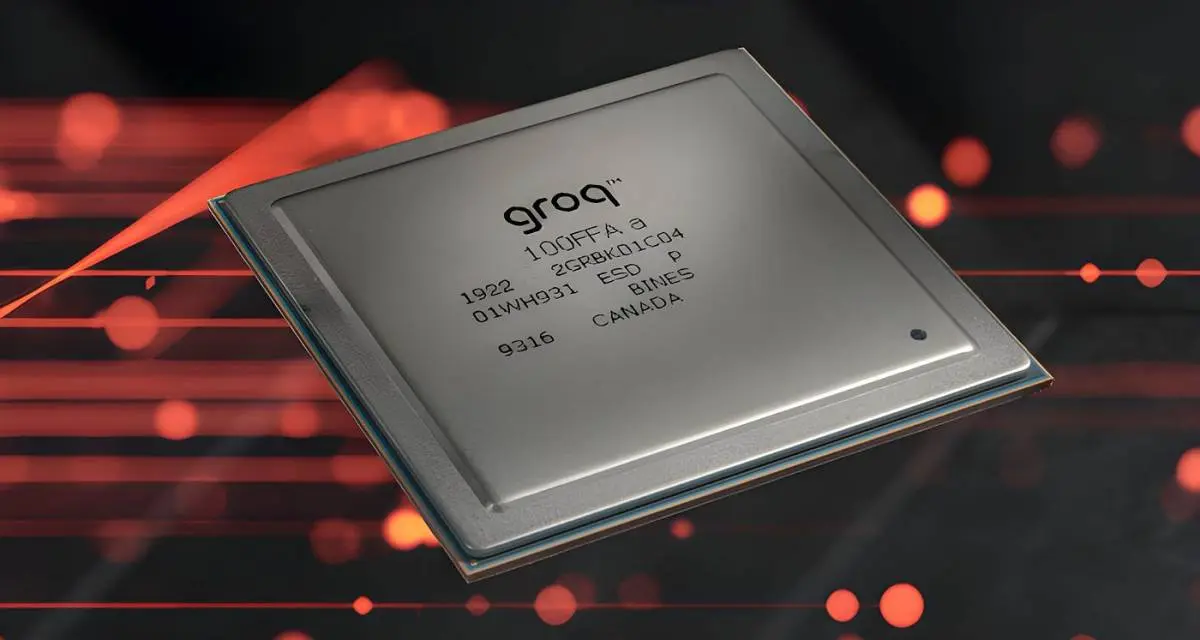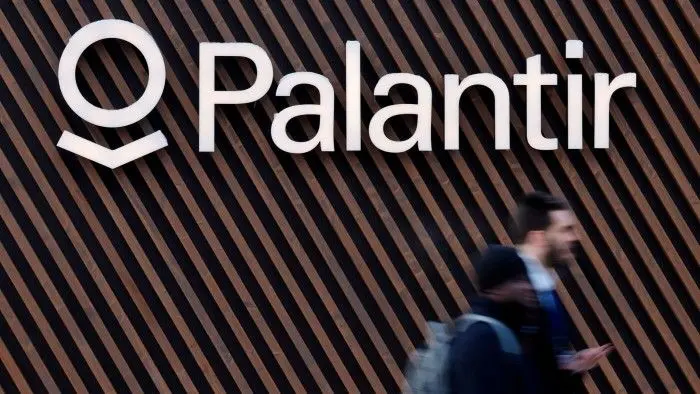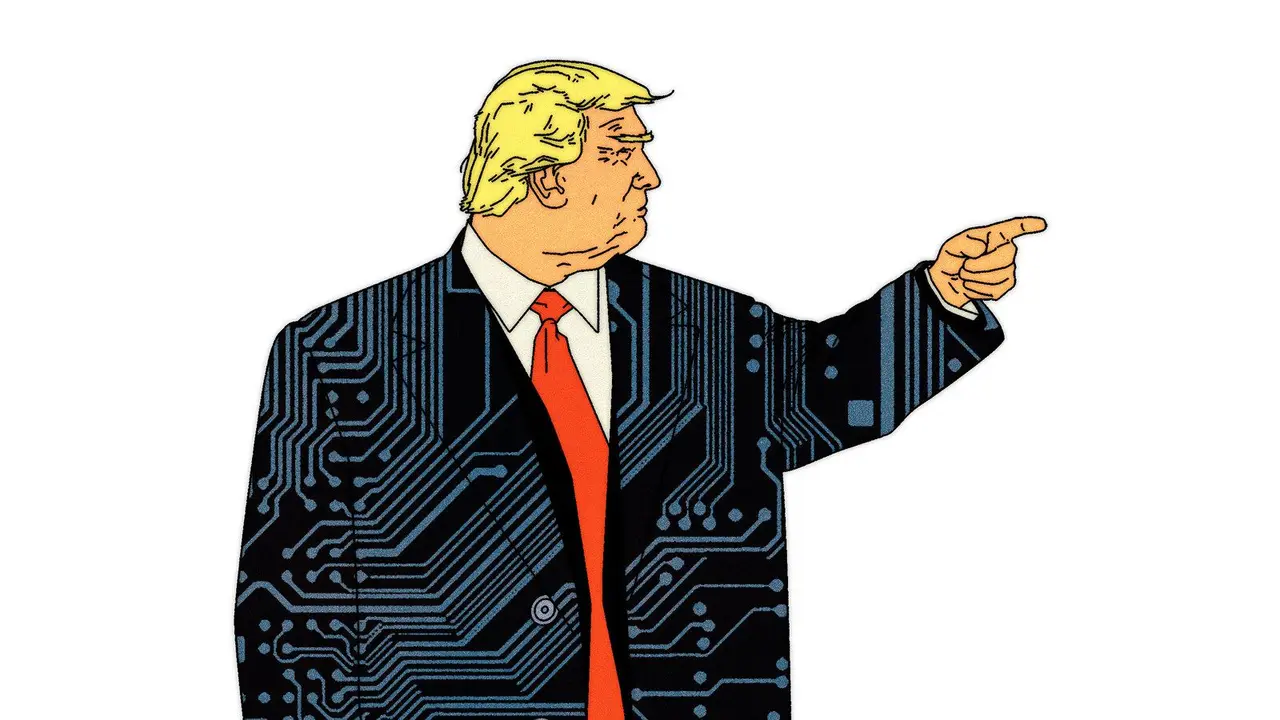Nvidia's Potential Rise to $2 Trillion Market Cap: A Tech Giant in the Making
3 Sources
3 Sources
[1]
1 Unstoppable Stock That Could Join Apple, Microsoft, Nvidia, Alphabet, Amazon, and Meta in the $1 Trillion Club | The Motley Fool
Decades of experience and novel solutions will likely drive this AI specialist even higher. One of the clear and present trends driving the market since early last year is that of artificial intelligence (AI). Investors need only review the list of the world's most valuable companies to see this paradigm shift on full display. Indeed, seven of the top 10 are major players in the race to adopt generative AI, with others climbing the ranks at a breathtaking pace. Apple and Microsoft each have a market cap that exceeds $3 trillion (as of this writing). Nvidia stock has been extremely volatile, but still ranks third at $2.6 trillion. Alphabet, Amazon, and Meta Platforms have market caps of $1.9 trillion, $1.7 trillion, and $1.2 trillion, respectively. The common thread that runs through these market leaders is the vast opportunity represented by AI. Though it currently has a market cap of just $60 billion, it might seem outlandish to suggest that Palantir Technologies (PLTR 11.25%) is making all the right moves to secure membership in the $1 trillion club. Yet, while many companies are still formulating an AI strategy, Palantir has developed a novel solution that is already ringing the cash register. Palantir became a publicly traded stock in late 2020, but the company has been working on AI in relative obscurity for more than two decades. After honing its craft by developing AI solutions for the U.S. government and its allies, Palantir turned its attention to creating actionable intelligence for enterprise-level companies. As the godfather of AI solutions, Palantir immediately recognized the implications of generative AI, and its years of experience allowed the company to move quickly to capitalize on the opportunity. The fruit of its labors is Palantir's Artificial Intelligence Platform (AIP), which uses generative AI to solve business-specific problems. However, it was the company's "teach a person to fish" approach that has won rave reviews from customers. It hosts boot camps to develop AI tools companies can actually use. In these workshops, users work side-by-side with Palantir engineers to find solutions to their most pressing business problems. Palantir revealed just this week that more than 1,025 organizations have completed boot camps since mid-2023. Many resulted in seven-figures deals signed just days or weeks after the completion of a boot camp session. This drove more than $1 billion in contract value added during the quarter. Palantir previously revealed that it's "seeing the acceleration of larger deals and shorter times to conversion" as boot camp attendees see firsthand the value of this approach to AI adoption. This strategy has accelerated Palantir's results. In the second quarter, the company's revenue of $678 million climbed 27% year over year and 7% sequentially. The headliner was its U.S. commercial revenue, which jumped 55% to $159 million, and represented 23% of total revenue, thanks to a strong showing from AIP. Palantir's long history of AI expertise has given the company a clear advantage for government and enterprise customers looking to implement the latest AI solutions. Furthermore, generative AI has attracted the attention of the world's governments, with many looking to develop sovereign AI solutions, representing another compelling opportunity. Add to that the speed at which enterprises are adopting AI, and the magnitude of the opportunity comes into focus. However, this is a trend that will likely take years or even decades to come to fruition. According to Wall Street, Palantir is forecast to generate sales of $2.7 billion in 2024, giving it a forward price-to-sales (P/S) ratio of about 22. Assuming its P/S remains constant, Palantir would have to grow its revenue to roughly $45 billion annually to support a $1 trillion market cap. Revenue grew by 27% year over year in the most recent quarter. At that rate, Palantir could reach the $1 trillion threshold by 2036. However, generative AI adoption is growing by leaps and bounds. Palantir's U.S. commercial revenue -- composed primarily of generative AI solutions -- grew 40% year over year in the first quarter and 55% in the second quarter. At the same time, the segment's customer count grew by 69% and 83%, respectively, so business is clearly accelerating. Furthermore, management has increased its forecast for the U.S. commercial segment, guiding for growth of at least 47% for the full year. Not only is it the company's biggest growth driver, but now accounts for 23% of total sales. As generative AI becomes a greater percentage of overall revenue -- and if the accelerating growth continues -- Palantir could join this elite fraternity much sooner. For example, if the company's revenue growth approaches 40% -- the low end of the segment's recent trajectory -- it could become a trillionaire in less than a decade. Estimates regarding the potential for generative AI continue to tick higher, but truthfully, no one knows for sure how big it could ultimately be. Estimate suggest the market could grow to between $2.6 trillion and $4.4 trillion annually, according to global management consulting firm McKinsey & Company. If Palantir's growth continues to accelerate and the company maintains its position as the go-to for adopting AI, it won't be terribly long before it sports a market cap of $1 trillion.
[2]
Prediction: 1 Unstoppable Stock Will Join Nvidia, Apple, Microsoft, and Alphabet in the $2 Trillion Club Within 3 Years | The Motley Fool
Artificial intelligence could mint another $2 trillion tech giant very soon. The U.S. economy has produced the world's most valuable companies for over a century. United States Steel became the first company to achieve a $1 billion valuation in 1901, and 117 years later, Apple became the first company to surpass a valuation of $1 trillion. Apple was also the first company to cross the $2 trillion and $3 trillion thresholds. Only three other U.S. companies -- Microsoft, Nvidia, and Alphabet -- are valued at more than $2 trillion as of this writing, but I think one more is set to join them. Meta Platforms (META -1.05%) is the parent company of popular social networks Facebook, Instagram, Messenger, Threads, and WhatsApp, but it's also becoming a serious contender in the artificial intelligence (AI) race. Meta is using AI to improve monetization on its social platforms, but it also developed the world's most advanced open-source large language model (LLM) called Llama. Here's how Meta could achieve a $2 trillion valuation within three years, and if it does, investors who buy the stock today could earn a 67% return. Meta serves over 3.2 billion people across its family of apps every single day. Social networks like Facebook and Instagram used to focus on connecting users with their friends and family, but they have transformed into entertainment platforms with AI-powered recommendation engines ensuring everybody sees the most relevant content, even if it wasn't posted by someone they know. CEO Mark Zuckerberg says this shift is increasing the amount of time users spend on Meta's platforms, which means they view more ads and, therefore, become more valuable to the company. Speaking of which, Meta continues to develop AI tools for advertisers, too, which can help them create the most engaging content and target the most relevant audience. Eventually, Zuckerberg says businesses will be able to tell Meta their objective and their budget, and its AI engine will autonomously handle the entire process for them -- from crafting the creative to selecting the target audience. That's a game changer, because it means even the smallest business with no marketing team can yield the best possible return from its ad dollars. But it gets better. Meta released a chatbot called Meta AI last year that can answer questions on most topics and even generate images on demand. It paves the way for Business AI, which could be a substantial revenue driver in the future. Zuckerberg believes every business will have its own AI agent trained to handle incoming queries from customers on Messenger and WhatsApp, for example, and even process sales. That will facilitate around-the-clock service even when the business owner is unavailable. Llama is the LLM that powers the exciting AI features I just mentioned. It's open-source, because Zuckerberg believes a widely deployed model used by thousands of developers will improve at a much faster rate than if Meta did all of the testing and troubleshooting alone. Meta just released Llama 3.1, and with 405 billion parameters, it's the most advanced version so far. Zuckerberg says Llama 3 is already competitive with most leading models, but he's focused on developing Llama 4, which he believes will set the standard for the industry next year. Training Llama 4 will require up to 10 times the data center compute capacity compared to Llama 3, which means it will likely cost tens of billions of dollars in new infrastructure. I'll talk more about the cost in a moment, but better LLMs will result in more advanced user-facing AI applications, so Meta will have to invest heavily if it wants to stay ahead of the pack. Otherwise, users might spend more time on OpenAI's ChatGPT or Alphabet's Gemini instead of Meta AI, which could hurt the company's ability to generate revenue. Meta generated $39 billion in revenue during Q2, which was a 22% increase from the year-ago period. But the company's bottom line is the real story, because it continues to benefit from the cost-cutting measures enacted since late 2022. They involved 21,000 job cuts and a commitment from Zuckerberg to spend more cautiously on projects like the metaverse, which generate minimal revenue. As a result, Meta's Q2 net income soared 73% year over year to $13.4 billion. That followed three straight quarters of triple-digit percentage growth. The result was especially impressive when you consider the speed with which Meta is ramping up its capital expenditures for AI. It allocated $8.4 billion toward capex during Q2, which was up from the $6.3 billion it spent during the first quarter. Meta CFO Susan Li told investors capex could hit $40 billion for the whole of 2024, so spending appears set to accelerate in the second half of the year. Plus, Li forecasts "significant" growth in capex in 2025. Nearly all of that money will go toward data center infrastructure, servers, and chips to accelerate the development of LLMs like Llama 4, which will bring new user-facing AI applications to life. Based on Meta's trailing-12-month earnings per share of $19.59 and its current stock price of around $488, it trades at a price-to-earnings (P/E) ratio of 24.9. That means it would have to rise 23% just to trade in line with the Nasdaq-100 index, which trades at a P/E ratio of 30.6. That alone would lift Meta's market cap to almost $1.5 trillion. But Meta is even cheaper when measured against its future earnings. Wall Street expects the company to generate $23.93 in earnings per share during 2025, placing the stock at a forward P/E ratio of just 20.4. If that forecast is accurate and Meta's P/E ratio also rises to trade in line with the Nasdaq-100 by the end of next year, that will place its valuation at $1.8 trillion. That implies Meta will only have to grow its earnings per share by 11% in 2026 to warrant a $2 trillion valuation. Considering the company grew its earnings at a compound annual rate of almost 30% in the decade between 2014 and 2023, I say there is a very good chance it delivers. Plus, there is a strong possibility that AI is a more powerful tailwind for Meta than analysts expect right now. The company's growing portfolio of AI tools -- especially for businesses -- could drive up marketing spending and also pull ad dollars away from its competitors. There is no telling how big that opportunity might become. Even if it doesn't get there within three years, I think Meta has a clear path to join the $2 trillion club eventually.
[3]
Prediction: This Hypergrowth Company Will Be Wall Street's First $6 Trillion Stock -- and It's Not Nvidia! | The Motley Fool
One member of the "Magnificent Seven" has a clear path to become the most-valuable publicly traded company. Change is one of the only constants investors will find on Wall Street. Thanks to a combination of innovation, acquisitions, mergers, bankruptcies, legal judgments, competition, and even Acts of God, the stock market's "leaderboard" is constantly in flux. This is to say that Wall Street's largest companies today aren't liable to hold their positions five, 10, or even 20 years from now. Just six years ago, tech goliath Apple (AAPL 1.25%) made history by becoming the first publicly traded company to reach a $1 trillion market cap. By June 2023, it had crossed the psychological $3 trillion barrier. It took less than five years for the stock market's largest company to triple in value, which begs the question: Which hypergrowth company will be the first to double the current peak of a little over $3 trillion in market cap and reach a $6 trillion valuation? While I'll give you my very clear prediction in a moment, let me work my way backwards and show why some of today's most-influential businesses within the "Magnificent Seven" aren't the answer. Considering that artificial intelligence (AI) is the hottest thing since sliced bread, you'd think AI kingpin Nvidia (NVDA -5.12%) would have the inside track to becoming Wall Street's most-valuable business. However, I've been pointing out for months just how many headwinds the ace of the AI movement is set to face. Despite having superior AI-graphics processing units (GPUs) with top-notch compute ability, Nvidia's inability to satisfy all of its customers will open the door for external competitors to grab market share. Likewise, all four of Nvidia's largest customers, which account for around 40% of its net sales, are developing AI chips of their own. Even if these chips are purely complementary to Nvidia's H100 GPUs, they're going to take up valuable data center space and lessen the need for Nvidia's hardware in the years to come. The biggest worry might just be that every next-big-thing innovation over the last 30 years has navigated its way through a bubble-bursting event early in its existence. With most businesses lacking a clear gameplan with their AI investments, it looks probable that the AI bubble will burst sooner than later, and ultimately drag Nvidia down with it. As for Apple, its growth engine has mostly stalled out. Net sales are up by about 1% through the first nine months of fiscal 2024 (Apple's fiscal year ends in late September). Although a record-breaking buyback program has been a major help to Apple's bottom line, it makes no sense for investors to pay a high multiple to earnings if Apple's sales growth is hardly above the flatline. While subscription services continue to be a bright spot -- up 13.2% through the first nine months of fiscal 2024 versus the comparable period in 2023 -- lagging iPhone sales are liable to drag on Apple's share price. On the other hand, Microsoft (MSFT -0.29%), Google parent Alphabet (GOOGL 0.41%) (GOOG 0.13%), and social media maven Meta Platforms (META -1.05%) do have a path to a $6 trillion valuation, but would need things to go just right for it to happen. Microsoft enjoys sustainable moats and exorbitant cash flow from its legacy Windows and Office segments, and should deliver double-digit sales growth from Azure, the world's No. 2 cloud infrastructure service platform. With plenty of cash on hand, Microsoft can easily invest for the future via organic or inorganic means. However, Microsoft is also heavily tied to the AI revolution via its investments in OpenAI, the company behind popular chatbot ChatGPT. If the AI bubble were to burst, as I expect it will, it could be hit harder than other "Magnificent Seven" members, aside from Nvidia. Similar to Microsoft, Alphabet should benefit nicely from the growth of its cloud infrastructure service platform known as Google Cloud. Enterprise spending on cloud services is still in its early innings, which bodes well for this high-margin operating segment. The only true knock I have against Alphabet is its strongly cyclical ties. With roughly 76% of its $84.7 billion in second-quarter sales derived from advertising, Alphabet will always be somewhat tethered to the health of the U.S. and global economy, as well as investor sentiment. Comparatively, Meta Platforms is even more reliant on advertising. Just shy of 98% of its $75.5 billion in net sales through the first-half of 2024 have come from ads on its social media platforms. Although long-winded economic expansions are a positive for Meta's ad-driven operating model, and the company's metaverse investments have a chance to pay off in a big way in the latter-half of this decade, its stock would have to quintuple in value to become Wall Street's first $6 trillion company. This seems a stretch given the potential for U.S. economic growth to slow in the coming quarters. Though it's going to take some time -- i.e., don't expect the stock market's outsized annual returns to continue indefinitely -- my prediction is that Amazon (AMZN 0.52%) will cut the proverbial ribbon and cross the $6 trillion threshold before any other publicly traded company. While most people have acquainted themselves with Amazon through its globally leading online marketplace, the nuts-and-bolts that generate the bulk of the company's operating cash flow have little to do with e-commerce. First and foremost, Amazon Web Services (AWS) is the world's leading cloud infrastructure service platform. AWS held a 31% share of cloud infrastructure services spending as of the end of 2023, with annual run-rate sales topping $105 billion, as of June 30. This segment is consistently responsible for 50% to 100% of Amazon's operating income, and it should play a key role in doubling Amazon's operating cash flow by 2026. Amazon is also just beginning to harness the value of its content via its Prime subscription service. Landing an 11-year streaming deal with the National Basketball Association (NBA), coupled with being the exclusive partner of Thursday Night Football, makes Amazon's video platform the wave of the future. It should have no trouble increasing Prime subscription prices, as well as generating boatloads of advertising revenue. Speaking of advertising services, Amazon is seeing north of 3 billion visits to its website on a monthly basis. Since many visitors to Amazon are motivated shoppers, businesses are willing to pay a premium to get their message(s) in front of users. Not surprisingly, Amazon's advertising services segment has delivered year-over-year constant-currency sales growth of at least 20% dating back more than two years. Even if the AI bubble bursts and takes Nvidia and Microsoft down with it, Amazon's various fast-growing ancillary channels can sustain double-digit growth. What's more, investors willingly paid a median of 30 times year-end cash flow to own shares of Amazon stock during the 2010s. Investors in Amazon today are only paying 11.5 times forecast cash flow for 2025. If Amazon were to be valued at the same median cash-flow multiple it carried throughout the 2010s, and it continues to grow at its existing pace, it would have the clearest path to a $6 trillion market cap.
Share
Share
Copy Link
Nvidia, the AI chip leader, is poised for significant growth. Analysts predict it could join the exclusive $2 trillion market cap club, potentially becoming the next tech giant alongside Apple and Microsoft.

Nvidia's Meteoric Rise in the AI Era
Nvidia, the company best known for its graphics processing units (GPUs), has been making waves in the tech industry. As artificial intelligence (AI) continues to dominate the technological landscape, Nvidia's specialized chips have become increasingly crucial, positioning the company for potential unprecedented growth
1
.The $2 Trillion Club: A New Member on the Horizon?
Currently, only a handful of companies have achieved a market capitalization of $2 trillion or more, with Apple and Microsoft leading the pack. However, analysts are now predicting that Nvidia could be the next to join this exclusive club
2
. This projection is based on Nvidia's strong performance in the AI chip market and its potential for future growth.Factors Driving Nvidia's Growth
Several key factors contribute to Nvidia's potential ascent:
-
AI Dominance: Nvidia's GPUs are essential for training and running AI models, giving the company a significant advantage in the booming AI market.
-
Data Center Expansion: The increasing demand for cloud computing and AI services is driving growth in data centers, where Nvidia's chips play a crucial role.
-
Gaming Industry: Despite the focus on AI, Nvidia maintains a strong presence in the gaming industry, providing a stable revenue stream.
Wall Street's Optimistic Outlook
Wall Street analysts are increasingly bullish on Nvidia's prospects. Some even speculate that the company could eventually reach a $6 trillion market cap, potentially becoming the world's most valuable company
3
. While such predictions are speculative, they underscore the immense potential that experts see in Nvidia's future.Related Stories
Challenges and Competition
Despite the optimistic outlook, Nvidia faces challenges:
-
Market Volatility: The tech sector is known for its volatility, and Nvidia's stock price could be affected by market fluctuations.
-
Competition: Other companies, including AMD and Intel, are working to capture a larger share of the AI chip market.
-
Regulatory Scrutiny: As Nvidia grows, it may face increased regulatory attention, particularly regarding market dominance and antitrust concerns.
Investor Considerations
While Nvidia's potential is significant, investors should approach these predictions with caution. The tech industry is known for rapid changes, and achieving such astronomical market caps requires sustained growth and market dominance. Diversification and thorough research remain crucial for any investment strategy.
References
Summarized by
Navi
[1]
Related Stories
Tech Giants Race Towards $1 Trillion and $3 Trillion Market Caps, Fueled by AI Advancements
19 Oct 2024•Business and Economy

AI Stocks Surge: Nvidia, Apple, and Microsoft Lead the Trillion-Dollar Club
26 Jul 2024

Tech Giants Surge: Alphabet Poised to Join $3 Trillion Club Amid AI-Driven Rally
16 Jul 2024

Recent Highlights
1
Nvidia locks in $20 billion Groq deal, securing AI chip rival's technology and talent
Business and Economy

2
Chinese AI Models Close Gap With US Systems as Open-Source Strategy Reshapes Global Tech Order
Policy and Regulation

3
Doctors warn AI companions threaten mental health as kids turn to chatbots for friendship
Health





